How Mark Acquired A Gold IWC Big Ingenieur Instead of The Nautilus 5711 He Actually Wanted
The fact that IWC promoted the Big Ingenieur with the slogan "Handle without care" sealed the deal for Mark
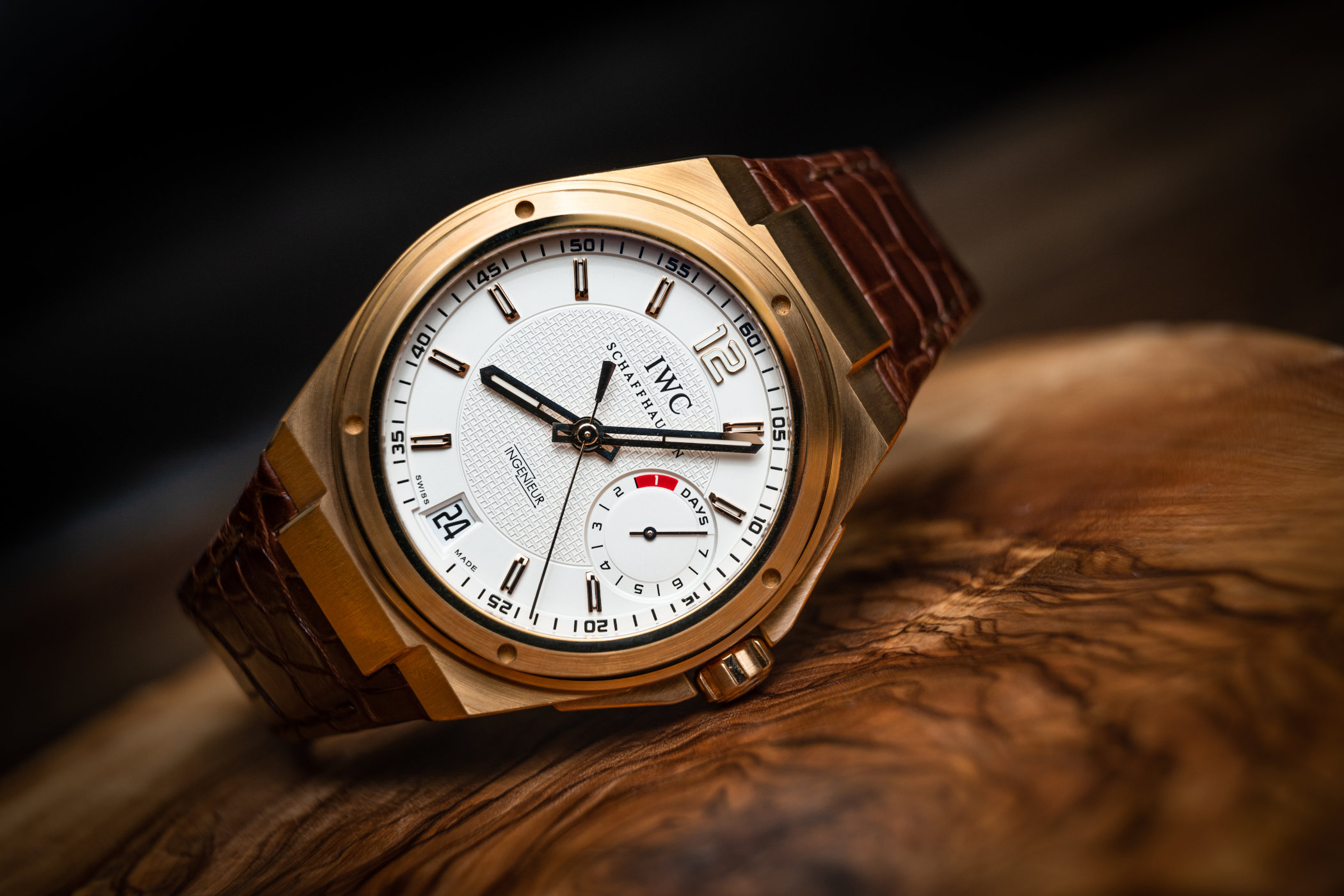
Mark Sinclair, aka @a_complicated_nerd on Instagram, is a lawyer from Copenhagen, Denmark. He’s already been a very productive contributor to the series, as we discussed his Blancpain Fifty Fathoms Chronograph already and a stunning Patek Philippe 5960P. Let’s say that even if he knows a lot about watches and has truly fine tastes in horology, he doesn’t take himself too seriously. And that’s exactly the thing he appreciates in IWC Schaffhausen. Enticed by the brand’s humorous advertising campaign in the mid-1990s, he fell for the brand about which he has a story or two to tell (and on other brands, too, as you will see). For his third appearance on MONOCHROME, he explains his awe for the IWC Big Ingenieur (ref. IW500503) he bought, whilst going to a dealer for a Patek Philippe Nautilus.
Frank Geelen, MONOCHROME – You were enthused by the IWC advertising?
Mark Sinclair, aka @a_complicated_nerd – Well, I clearly recall the moment I noticed the controversial, humorous, and pithy advertisements by Wirz Werbung (responsible for IWC advertising campaigns during 1996-2004). To advertise diving watches, for instance, Werbung announced poetically, Men have more depth than women. Now down to 2000 meters. Some people couldn’t look beyond the surface and appreciate the self-deprecating tone of the Werbung style of campaigning. Werbung was consequently replaced in 2005 by the Jung von Matt agency in Hamburg. It focused less on the battle of the sexes and went for an even more humorous tone, e.g. The reason why fish swim with their mouths open, which also proved effective despite the less provocative tone.
These advertisements left a lasting impression on me. I appreciate when established companies don’t take themselves too seriously; on a personal level, I take pride in having this attitude despite my degree in law. Carl Gustav Jung – the world-famous psychoanalyst who coincidently was once part-owner of the IWC through marriage – would probably have a field day analyzing all these advertising campaigns, and perhaps this interview too.
But it surely is not just the humour that attracts you so much…
There are quite a few aspects, actually, but one that really resonates with me is how IWC has a history of getting through tough times. It all started in 1868 with the American watchmaker Florentine Aristo Jones, who, at the age of 27, pursued his ambitions across the Atlantic in Switzerland. Considering how the watch industry was flourishing in North America at that time, it was rather courageous of F.A. Jones to pursue his dream of manufacturing pocket watch movements of the most excellent and consistent quality for the North American market.
Unfortunately, Jones more or less continuously faced financial difficulties during his pursuit of success in Switzerland – especially due to the heavy American import duty at the time. Despite numerous attempts to get on track, IWC was obliged to suspend payments and file for bankruptcy in December 1875. As some might know, Jones got summoned to a creditor’s meeting the following month but refused to attend since he wasn’t guaranteed his personal liberty. Ultimately, he had to return to North America and leave his life’s work behind in Schaffhausen. This was a sad case of a modern watch factory capable of producing top-quality products but with no one to run it. Jones managed to get back on his feet in North America excelling in the field of control and regulation technology. His life’s work was sold at an auction for 143,000 Swiss francs – even though the buildings, machinery, and stock were worth at least a million.
Afterwards, IWC navigated through various eras with Rauschenbach, Homberger, and the quartz-crisis being honourable mentions. My point – with our stroll down memory lane – is to emphasize that though IWC has been through a lot, indeed the brand still stands strong. This very aspect resonates with me at a personal level because I’ve been through the wringer multiple times in my life, and fortunately I’m stronger today than I was yesterday.
The IWC Big Ingenieur (ref. IW500503) is the model you want to highlight. Do you remember acquiring it?
I bought it in March 2012 from an authorized dealer in Scandinavia for roughly 18,000 euros. Before pulling the trigger on the Big Ingenieur, however, I showed up with the intent of picking up a Nautilus by Patek Philippe (Ref. 5711/1A) that the head of sales, Erik, graciously had me signed up for a few months earlier. In hindsight, passing on the Nautilus wasn’t the wisest decision – at least from a financial point of view.
One must remember, though, that timepieces like Nautilus (ref. 5711/1a, ref. 5712/1a, ref. 5980/1a, etc.), Royal Oak (ref. 15202, ref. 15300 and even ref. 26300) and Overseas didn’t sell like hotcakes back in the good ol’ days. Don’t get me wrong when I say this: it wasn’t easy, but not impossible to acquire a Nautilus at your local authorized dealer for roughly 23,000 euros, whereas one had no difficulties in getting signed up for a Royal Oak or Overseas 10 years ago – as opposed to today where you merely pass down your number on the waiting list to the next generation.
However, this also means that I chose the Big Ingenieur based purely on my desires in that specific moment. There was neither SoMe nor speculators who could influence my decision since this aspect of our passion wasn’t as prevalent as it is today. Furthermore, the talk of the town was focused on vintage watches back then. It just appealed more to me than the Nautilus, and this is an important aspect to keep in mind when purchasing a watch – at least if you’re a genuine watch enthusiast.
What were the main reasons for buying the Big Ingenieur? I mean, you went to the authorized dealer to buy a Nautilus and ended up with – at least in some respect – a very different watch.
As mentioned earlier, the advertising campaigns by Werbung and von Matt did leave a lasting impression on me, and the latter was also responsible for the following headline when IWC advertised the Big Ingenieur (ref. IW500501 in this instance): Handle without care.
These words were printed in capital letters on a poster in the showroom at the authorized dealer; so I kindly asked the store manager, Erik, whether they had the Big Ingenieur in stock. When in Rome, I thought.
Just like the Nautilus, it carries the legacy of Gérald Genta (and Hanno Burtscher as well). Both were – according to Manfred Fritz et al. in IWC Schaffhausen Engineering Time Since 1868 (p. 332) – involved in designing the third generation of the Ingenieur. This resulted in a luxury sports watch in 1976 – which followed the same design ethos and finishing principles of the Royal Oak (i.e., ref. 5402, introduced in 1972) and Nautilus (i.e., ref. 3700, introduced in 1976) – that became known as Ingenieur SL with the celebrated reference number 1832. The abbreviation SL stands for Safety and Longevity (ibid.), and the latter is certainly true for this iconic design. In this instance, there should be no shadow of a doubt that the Big Ingenieur was sculpted in the image of ref. 1832, though scaled to modern tastes. It’s kind of reminiscent of what Audemars Piguet did in 1993 with the Beast that – after the first 100 specimens – was named Offshore. It too was based on its svelte forefather.
The generous proportions (45.5 mm in diameter and 15 mm in thickness) of the Big Ingenieur did, however, serve more than just an aesthetic purpose as it also houses IWC’s calibre 51113 – a seven-day movement with Pellaton winding mechanism, balance amplitude of 3 hertz, a balance wheel with precision eccentrics and a Breguet spring. This was reputed to be the largest self-winding movement at the time of its launch in 2000. How big is it then? one might ask. It’s a whopping 38.2 mm in diameter and 7.2 mm thick. By contrast, the Patek Philippe calibre 324 SC is 27 mm in diameter and 3.3 mm thick. While its finishing may not be a sight for sore eyes like the calibre 324 SC, it’s certainly no slouch either. When taking a look under the hood, you’ll immediately notice the gold Probus Scafusia medallion embedded in the large open-worked winding rotor. Not only is it emblematic. It also contrasts nicely with the rest of the calibre. An open-worked rotor also has the benefit of offering a more detailed glimpse into a given calibre; I look frequently to enjoy the interaction between the visible components.
Admittedly, I also got a little gold fever when pulling the trigger on the Big Ingenieur. While some may find a large gold watch vulgar or even construe it as an act of midlife crisis, there’s just something satisfying about a well-finished watch case in precious metal (18 ct. red gold in this instance). This sensation of satisfaction is further enhanced the moment you notice Genta’s design philosophy coming to life through the lovely interaction between the brushed flanks and bevelled edges of the case. The same applies to the mirror-polished and brushed parts of the bezel – and its distinctive screwless portholes.
Considering the above-mentioned facts and factors, then what’s not to like about the Big Ingenieur?
Are you still delighted with your purchase after all those years?
Obviously, it depends on how you look at it. From a financial point of view, it’s most likely the dumbest decision of my life. Unlike Marty McFly and Emmett Brown from the Back to the Future franchise, I can’t travel back in time and undo this decision (or any other decisions for that matter).
Back then (and even more so on this very day), we’re still talking about a pretty penny for an exquisitely hand-finished timepiece in steel that only tells you the time and date at any given destination. As described in my first interview with Monochrome Watches, I had the privilege of visiting the highly-esteemed manufacturer and experiencing their entire production first-hand in 2013. It was rather fascinating to witness how the artisans at the different workstations and sites stoically processed every single watch component, e.g., cases and calibres, with the greatest attention to detail. This also made me realize, however, that I most likely wouldn’t have worn the Nautilus much, if at all, to be honest. I would have walked on eggshells every time I wore it in fear of adding any battle scars to it. And, in the end, I would probably have regretted the purchase. A strap is easy to replace, but a bracelet is expensive, and a replaced bracelet isn’t even an original.
So, from a practical point of view, I have most likely gotten more joy from the Big Ingenieur, because I’m not hesitant to use it on any given occasion. It’s still a great conversation piece that often catches the attention of other watch enthusiasts at get-togethers. The Big Ingenieur is also rare for a contemporary watch.
Today the term “rarity”, in terms of watchmaking, is, unfortunately, often associated with watches that are in great demand and inflated on the market, without referring to the actual number of pieces produced. Considering how this version of the Big Ingenieur was only in production for three years (2008-2012), it should correspondingly be much rarer than the Nautilus that enjoyed a significantly longer production run (2006-2021) – even though the Nautilus collection as a whole, according to some sources, only makes up for roughly 20% of Patek Philippe’s annual production. Nevertheless, this aspect tickles my fancy as you’re less likely to spot a Big Ingenieur than a Nautilus in the wild or on Instagram.
So, my answer to your question is yes. I’m still delighted with my purchase, and I can wholeheartedly recommend it to anyone within our field of passion.
What are people’s reactions to it? And under what circumstances would you wear it?
Collectors and watch enthusiasts tend to be surprised by how wearable it is despite its dimensions and heft. Some of them have described it as a rather underappreciated ticker that deserves loving attention, while others have been curious about when some Ingenieurs – including the ref. 1832 and Big Ingenieur – will flourish on the market like other of Genta’s iconic designs.
A friend of mine, Jacob, tried – in a more or less humorous tone – to trade in his Tudor Black Bay Chronograph for it. Erik, the head of sales at the authorized dealer, called it a real man’s watch.
I’d wear it on a warm and sunny day, perhaps even at Smukfest, with my shirt sleeves rolled up high – reminiscent of Duran Duran in the 1980s – along with my ripped denim jeans and distressed brown leather boots with a matching belt. This is my preferred attire on any given day, but another aspect is – to be frank – it can’t slide under a regular or tight shirt cuff due to its thickness.
Do you know the current market value of the watch? Would you ever sell it and at what price?
Yes, and I must admit it’s a bargain (relatively speaking, of course) considering how much the Big Ingenieur has to offer at its price point. There are few watches on the secondary market that can punch above its price class like the Big Ingenieur can – if you take all the horological goodness that it has to offer within its market price that currently ranges between 14-16,000 euros (depending on condition and original accessories).
Honestly, I’m not inclined to sell it as there are not many around. In addition, it offers great value for money in comparison to other watches – with a similar horological pedigree – currently available on the secondary market within this price range, e.g., Vacheron Constantin Overseas (ref. 42040) and Royal Oak Offshore Diver (ref. 15703 ST)[A1]. Plus, I have the benefit of being the first owner, and thus I know its exact service history and condition, which has a certain sentimental value for me too.
How would you describe your watch collection so far? Please come up with three words or ways that you’d consider fitting and perhaps indulge us with some photos too.
The word “eclectic” comes to mind because I don’t hold rigidly to a single paradigm, e.g., sports or dress watches, and other dichotomies but instead choose watches from various manufacturers that – to me, at least – seem to represent a genuine milestone or an icon within the history of watches.
Most of my timepieces can also be construed as a manifestation of my personality in the sense that many of them represent my individual character traits. For instance, I follow the principle of stealth wealth in most aspects of my life, because it allows me to treat myself with quality products without having to worry about disapproving glances from my peers (i.e., the Law of Jante) or similar reactions. Therefore, I usually prefer watches done in steel, silver or white precious metals, and I also like less-known models from reputable manufacturers.
The latter has become even more relevant to me in this day and age when hordes of people gravitate towards Nautilus, Royal Oak, and most Rolex watches for no reason other than the fact that a majority of their peers do so (i.e., lemming effect). Did you, for instance, know that Patek Philippe and Audemars Piguet make watches other than Nautilus and Royal Oak (rhetorical question)? The Patek Philippe Gondolo 8 Days, Day & Date and the Jules Audemars Equation of Time, for instance, trade for less than a fraction of what sellers demand a less-complicated stainless-steel Nautilus, Royal Oak, Overseas, and even Daytona on the secondary market.
I’m well aware that it’s a matter of supply and demand, and this brings me to a third word that describes my collection – at least to a certain degree: “uncommon”. This might sound odd – especially with my first choice of wording – but it’s not difficult to find timepieces that possess a certain je ne sais quoi from reputable manufacturers. One example is my Blancpain Fifty Fathoms Chronographe Flyback Quantiéme Complet; another is my Big Ingenieur. Both were made by reputable manufacturers and are yet uncommon in these specific configurations.
Are there any more watches you would like to buy? Your well-balanced and diverse collection would be considered a dream for many watch enthusiasts.
Yes, even though I’m in no rush at all. Last year, I was fortunate enough to be able to cross off one watch from my bucket list, as I finally added the Omega Speedmaster Moonwatch Calibre 321 (ref. 311.30.40.30.01.001) to my collection.
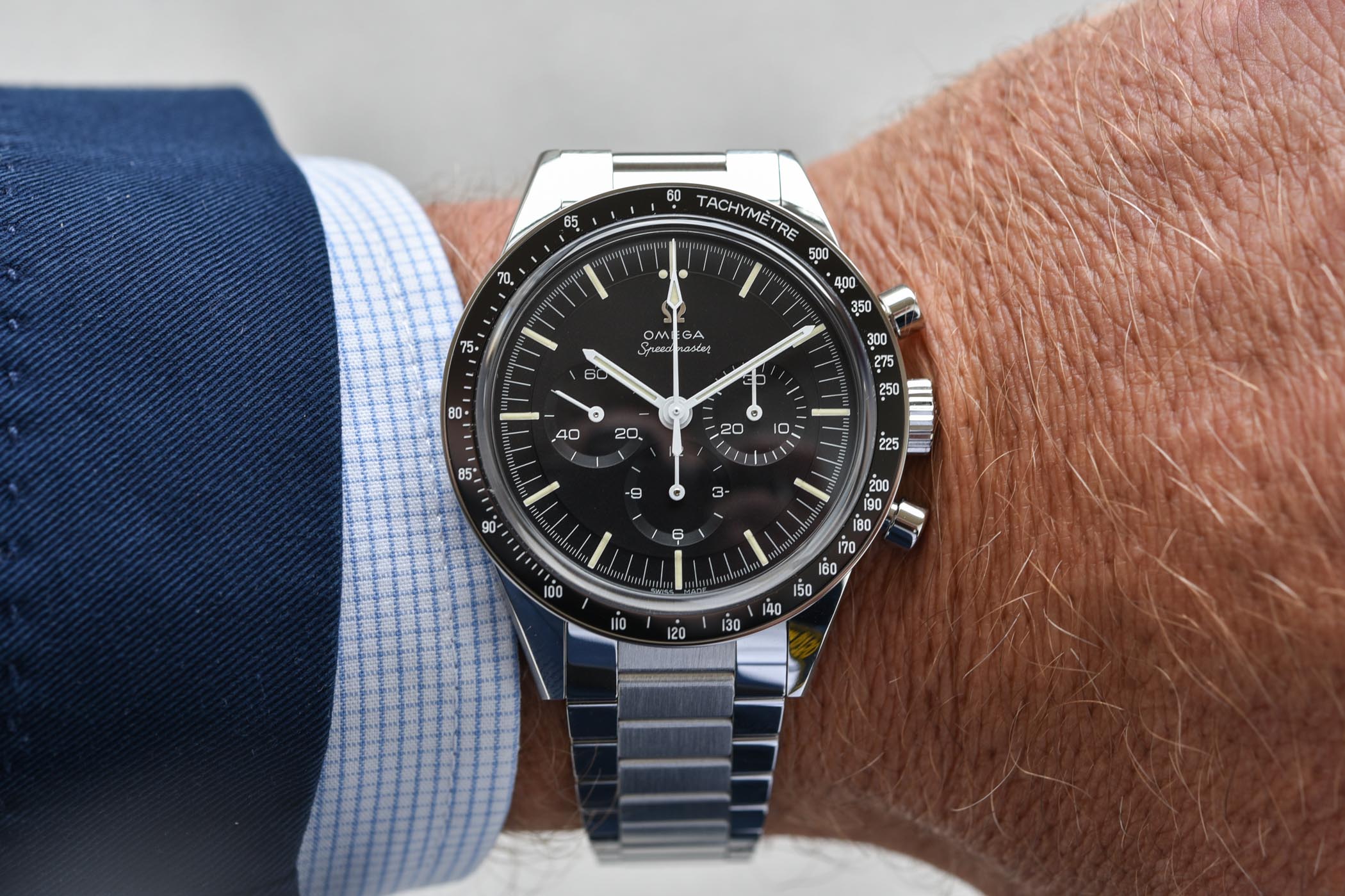
A very knowledgeable and dedicated sales representative from Klarlund in Copenhagen also gave yours truly a firm promise that I’ll be offered a BLRO 126710 in 2022 (after having waited for more than four years and based on many years of loyal purchase history). It’s beyond doubt that I’m stoked about this prognosis because its forefather – along with the Explorer II (ref. 16750) and Breitling Emergency (ref. E76321) – sparked my curiosity for watches in the early 2000s. It will be fun and truly fascinating for me – as a collector – to own an updated version of the pilot’s watch from 1954 (ref. 6542) as it laid the foundation for the modern travellers’ watch – along with Louis Cottier and the Patek Philippe ref. 1415 HU in 1931.
I’m also sincerely looking forward to getting my hands on the White Birch by Grand Seiko (ref. Slgh005) this year (or in 2023). Not only is it a gorgeous timepiece with a handsome calibre to boot; it also offers something that I currently don’t have in my collection: a hi-beat movement and dual impulse escapement. Honestly, I think that it would have been the perfect daily wearer, if only it had a micro-adjustable bracelet with slight tapering towards the clasp and a dash of luminescent material on the superbly-finished hour and minute hand.
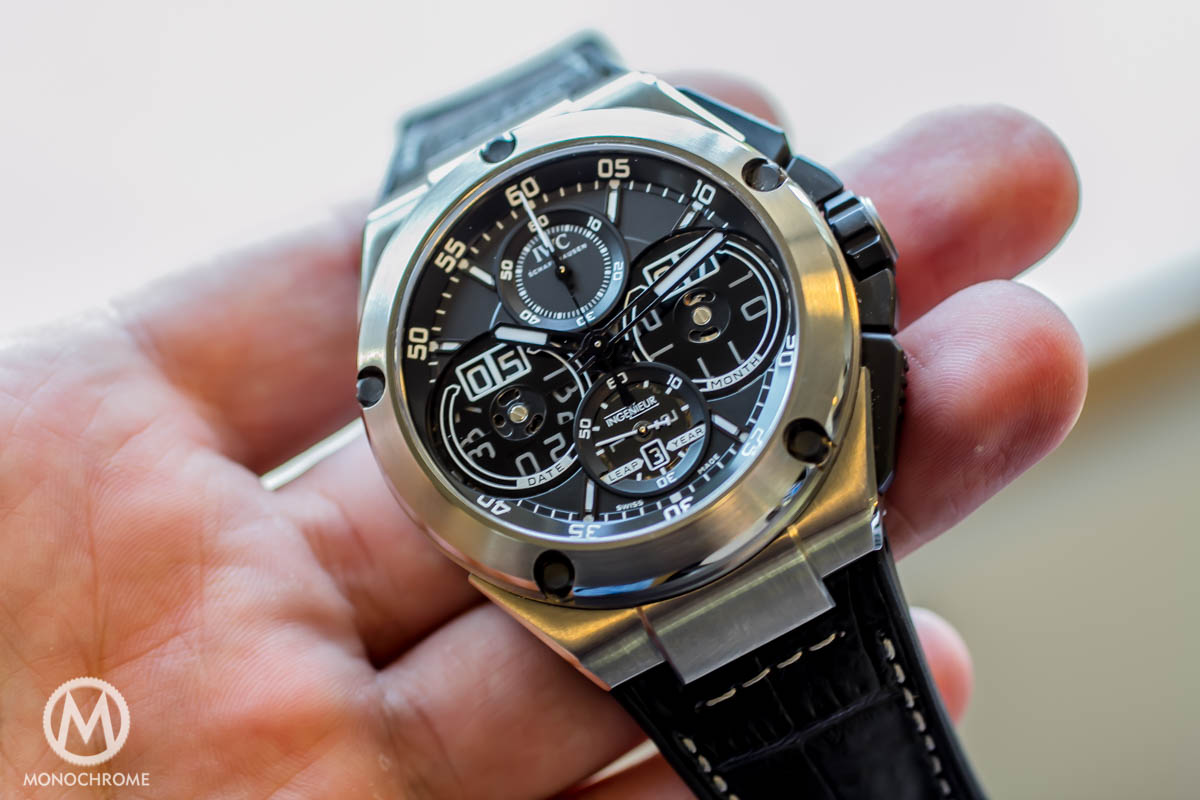
Someday, I’d also like to add a chronographe à quantième perpétuel to my collection in order to match my Blancpain Fifty Fathoms Chronographe Flyback Quantiéme Complet and Patek Philippe Chronographe Flyback Quantiéme Annuel. The IWC Ingenieur Perpetual Calendar Digital Date-Month (ref. IW379201) has been haunting my mind for quite some time now and will most likely continue to do so. I simply love its design – especially the symmetry of the dial and its distinctive way of telling time.
Yet, I’ve also been flirting with the idea of adding an IWC Da Vinci Perpetual Calendar (ref. 3751 and 3755 (which coincidentally also was designed by Hanno Burtscher)) or the Da Vinci Perpetual Calendar Kurt Claus Chronograph (ref. IW376204), because they offer a historically as well as a technically interesting calendar module where all aspects are operated using the crown. This way of setting the date indicators is different from my Blancpain and Patek Philippe, and it could, therefore, be fun to own three very different watches with some sort of calendar function and chronograph. Another possibility – which doesn’t seem too far-fetched with the skyrocketing prices of the Patek Philippe Aquanaut taken into consideration – would be trading in my Aquanaut (ref. 5167a) for a NOS (i.e., new old stock) Patek Philippe Chronographe á Quantiéme Perpétuel (ref. 5270g, r or j).
Finally, I’d really like to buy a Rolex Daytona (ref. 116500LN or ref. 116519LN) from an authorized dealer, ideally, Klarlund due to their superb service, even though it’s nigh impossible due to the unfathomable high demand and seemingly short supply of this iconic watch. On the other hand, if we didn’t have dreams to pursue then our lives would be rather dull. Nonetheless, it’s a sad day for genuine watch enthusiasts – like me – with a penchant for chronographs that the Daytona and other desirable watches are no longer readily available for the average Joe at authorized dealers.
My taste and desires have, therefore, changed a little bit since my first interview with Monochrome Watches. For many enthusiasts, including yours truly, watch collecting is a dynamic passion in which one’s goal of yesterday isn’t necessarily the same today.
Well, this leads me to the following question: If you could change one thing overnight about the watch industry (broadly construed) – what would that be?
In continuation of my answer to your last question, it would be fantastic if our hobby could become accessible for a larger crowd of people genuinely interested in treating themselves with a watch from Rolex, Audemars Piguet, Patek Philippe – just to name a few. Perhaps, it could slow down the current bull market where speculators flip watches faster than the speed of light. How could this become possible? one might ask.
A handful of people from around the globe might beg to differ when I suggest this; nonetheless, Omega did manage to create a model which gave millions of people – without prior history at their local authorized dealer (i.e., a track record of buying watches) – the possibility to reserve and eventually buy a couple of very desirable Speedmasters in 2017 and 2018, respectively. More specifically, I’m referring to how Omega made the Speedmaster Speedy Tuesday Alaska and Ultraman readily available for anyone on a global scale by announcing it on Instagram, amongst other media, and where one could reserve an example directly via their homepage.
Yes, I’m perfectly aware that a model like this will be challenging to administer for each manufacturer, but the disadvantages could – with the proper safeguards against circumvention – make the allocation of desirable watches independent of one’s track record at your local authorized dealer and thus fairer in some aspect and, to a certain degree, more independent from the speculators on the secondary market.
It would be fantastic to be able to put an end to the latter someday in the future – especially as certain watches are no longer appreciated for their mechanics, history and intended purpose (i.e., a time-telling device), but are purely treated as investment objects with no passion other than fattening one’s bank account.
Which brands do you think are doing interesting work out there?
It’s a matter of taste. If I were to pick three of the top of my head at this very moment, I’d say Bvlgari for starters. Bvlgari has really grown into a noteworthy player in the watch industry by putting all (or at least a majority) of its eggs into the Octo Finissimo collection, which, deservedly so, has gained them a lot of recognition from watch experts and enthusiasts alike with their third win in a row, including at the GPHG in 2021 as a prominent example.
Speaking of which, I was also delighted to see the White Birch win the men’s watch category at the GPHG. In general, Grand Seiko seems to have gained more traction with a larger audience in recent years, and it’s well deserved considering the superb level of finishing its watches have to offer within this price category. Please note that I would never ever consider 6,700-9,500 euros (incl. taxes) cheap for a watch.
Nonetheless, if you compare a time and date watch – intended for casual wear – from Grand Seiko to other watches within a similar category, e.g., Rolex Datejust 41 (ref. 126334 w. fluted bezel and jubilee bracelet) and Omega Constellation Co-Axel Master Chronometer, you’re in for a bargain in my humble opinion. This is – as previously hinted – not only because Grand Seiko manages to punch above its weight class (i.e., watches in its price range) with regards to their case, dial and indices, but also because Seiko as a brand has a rather decent pedigree from a horological point of view.
Audemars Piguet also deserves some credit for finally introducing a very attractive in-house self-winding chronograph movement with a fly-back function. Research and development, strategic marketing, amongst other things, take time; yet Patek Philippe and Vacheron Constantin had – in comparison – already introduced their in-house self-winding chronograph movements (i.e., CH 28-520 and calibre 5200) in 2006 and 2016, respectively.
Do you have general tips for people who want to start collecting watches?
Follow your heart and do a lot of research before splurging a bunch of cash on a certain watch. Talk with like-minded people and try to get some hands-on experience with your desired watch as it might burst your bubble when handling it in real life. Don’t buy into the so-called ideals on Instagram and other SoMe. I’m not saying that all users on Instagram either speculate or use watches as a status symbol, but if you don’t listen to yourself and follow your gut feeling, you might deprive yourself of buying a watch that will bring you joy.
Are you in touch with other collectors?
Yes, and it feels great to share my passion with like-minded people – especially at RedBar events in Copenhagen and other cities as well. It’s fascinating how a shared passion for mechanical watches can connect people from all walks of life, who – under other circumstances – perhaps wouldn’t have bumped into each other. It can be inspiring. And fun too. These relationships mean a lot to me because they add a new dimension to our hobby and can also lay the foundation for new friendships.
A special thank you to Mark for hiring a professional photographer, J.F. Sørensen, in order to bring you these superb photos.

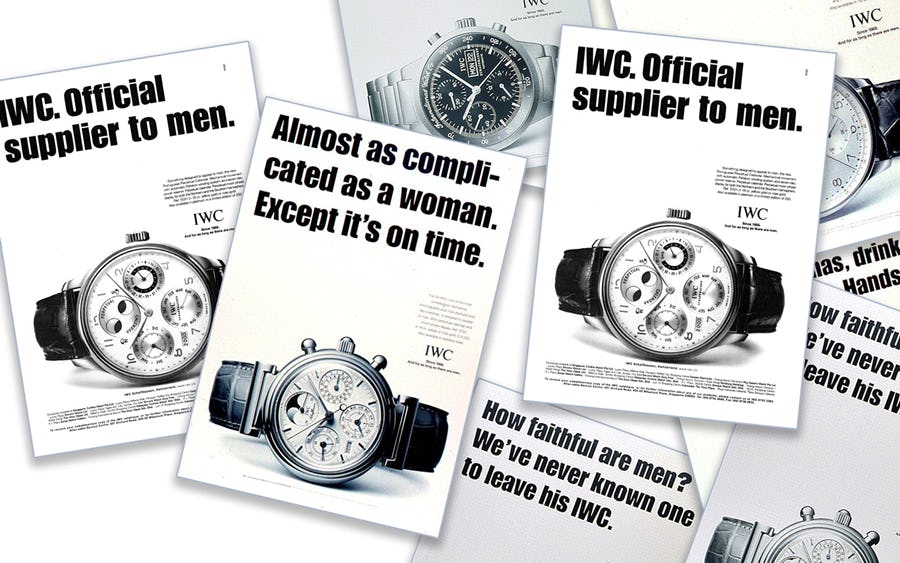
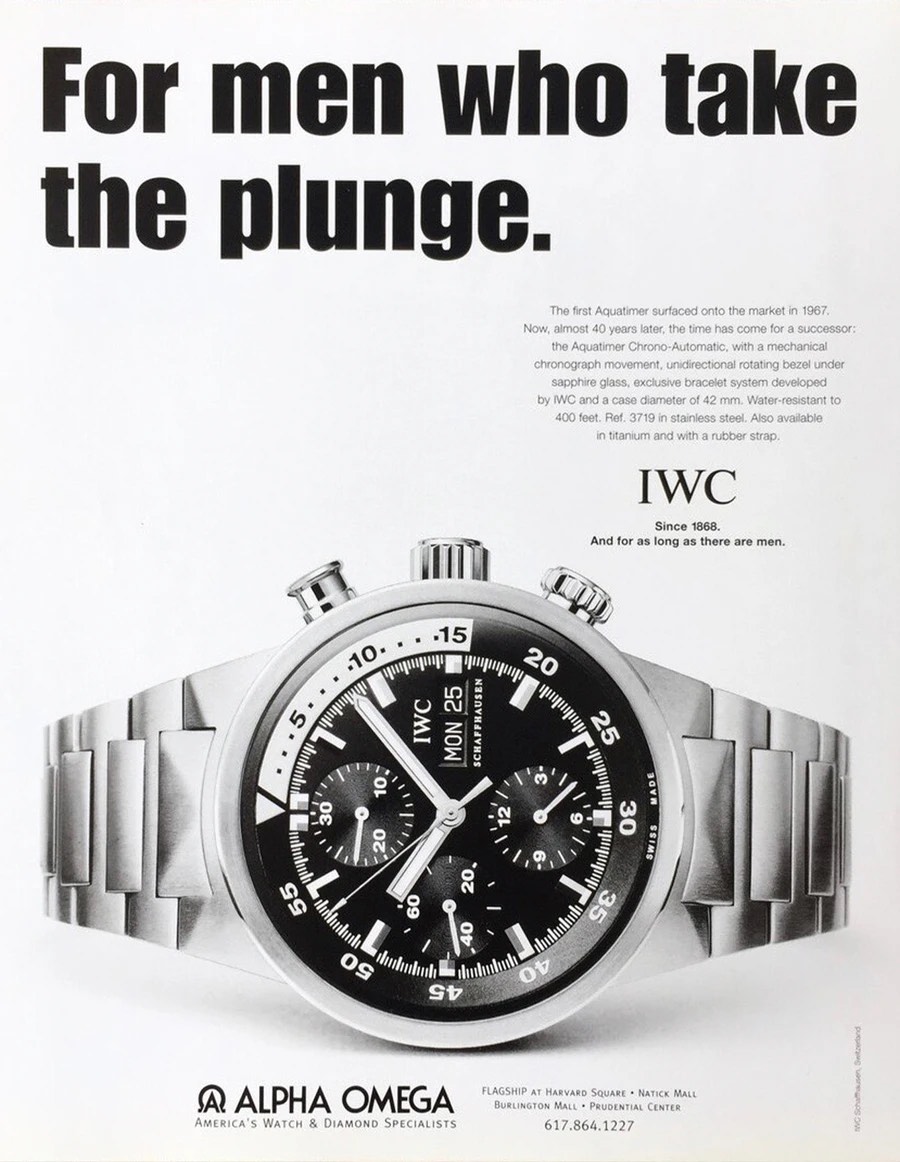

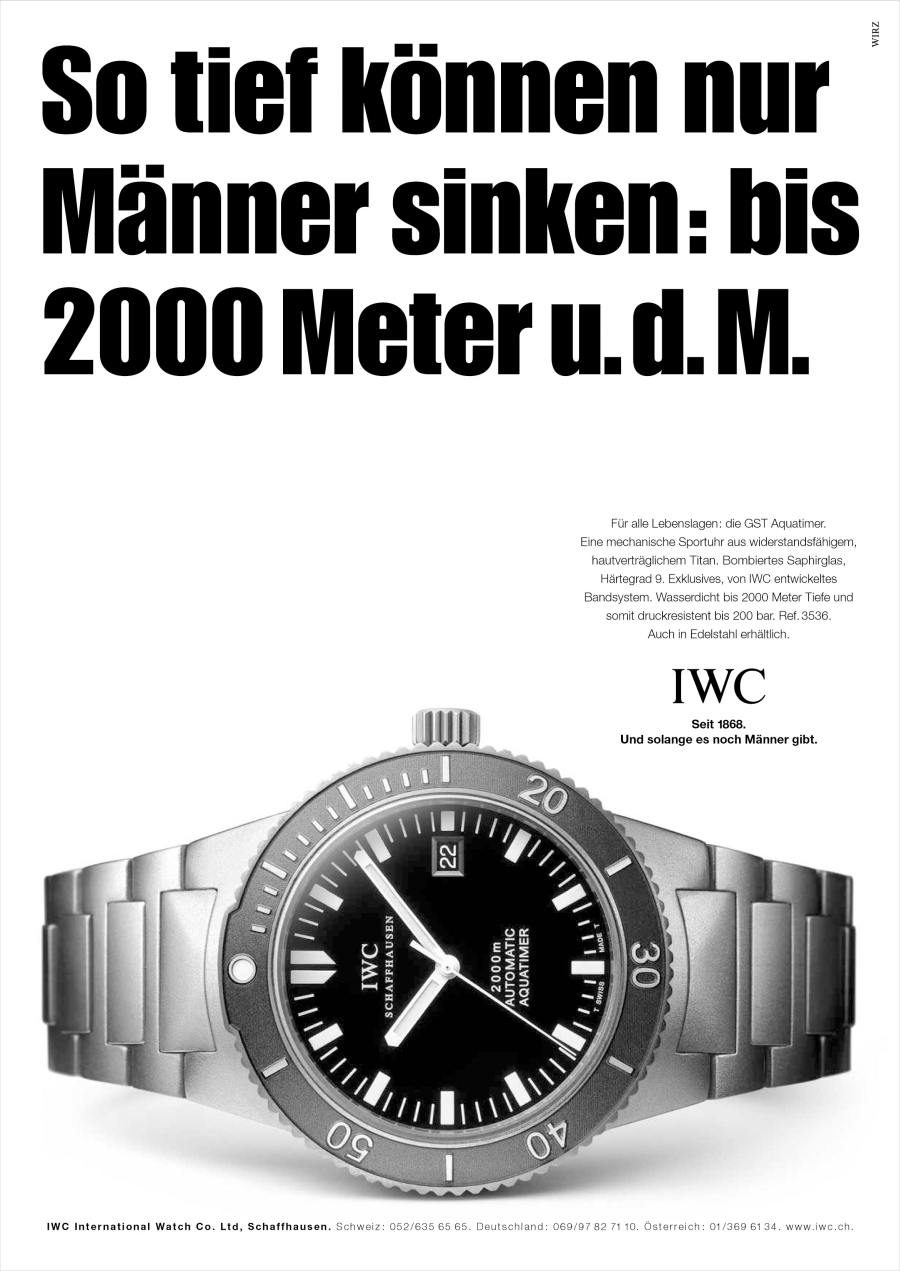
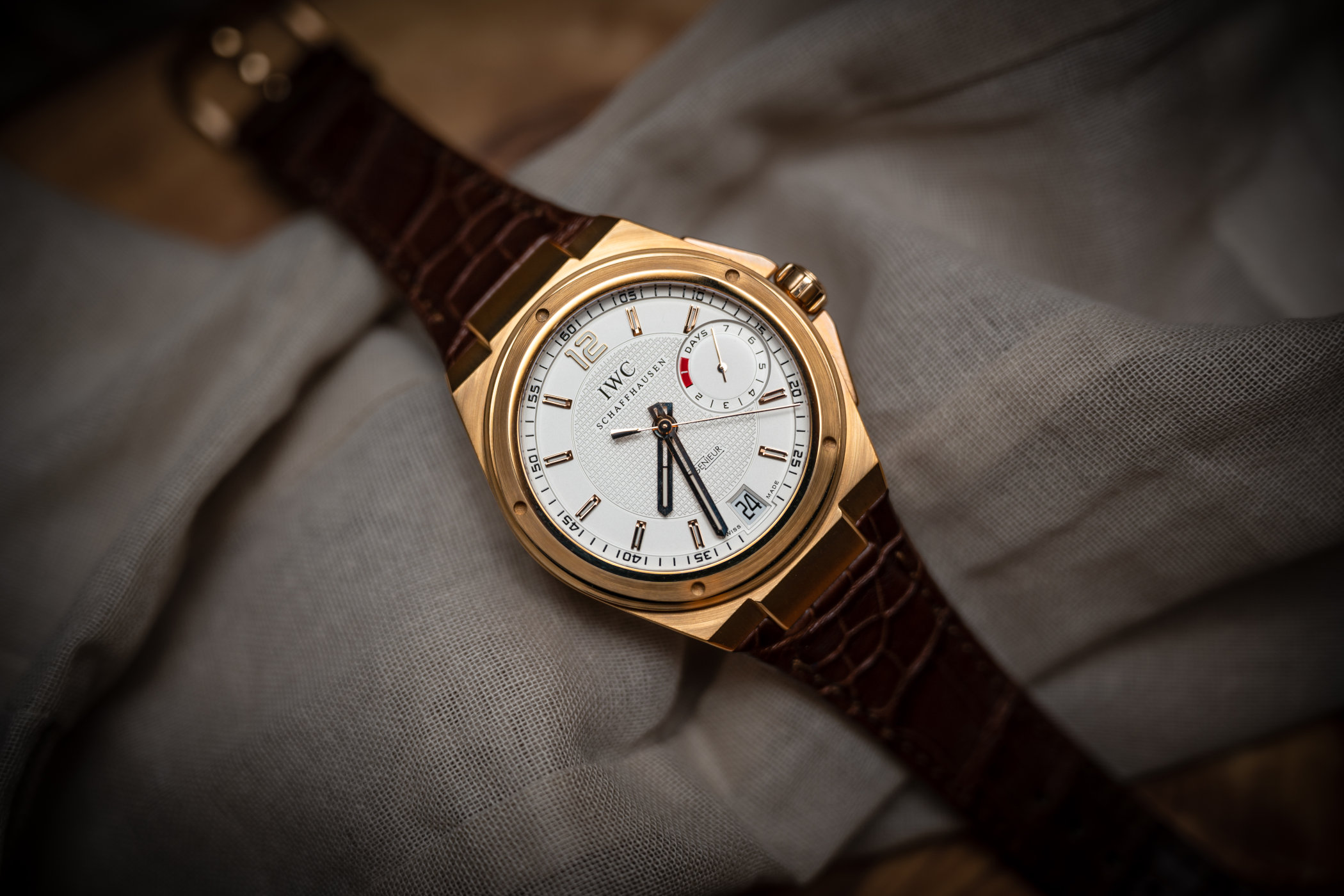

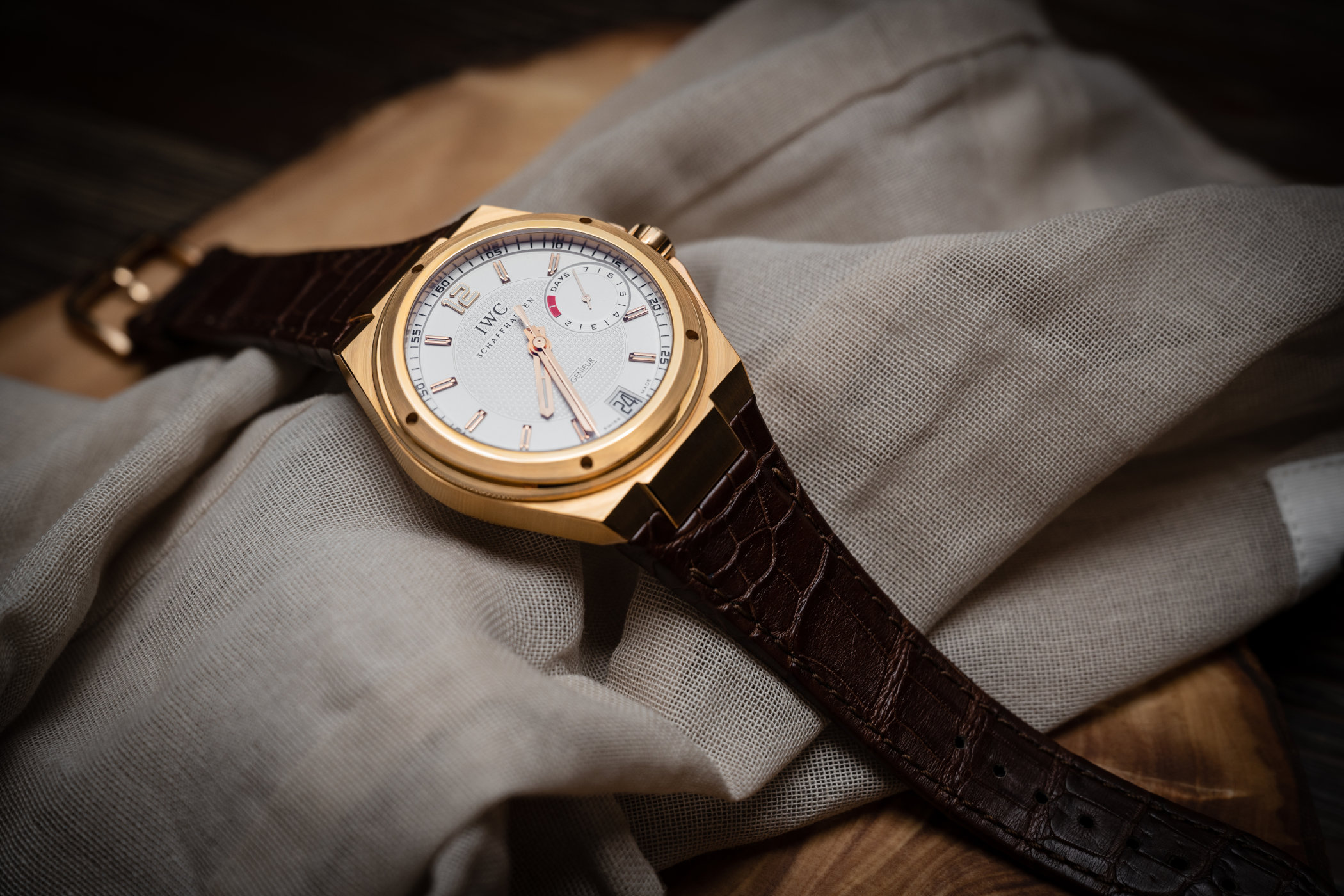

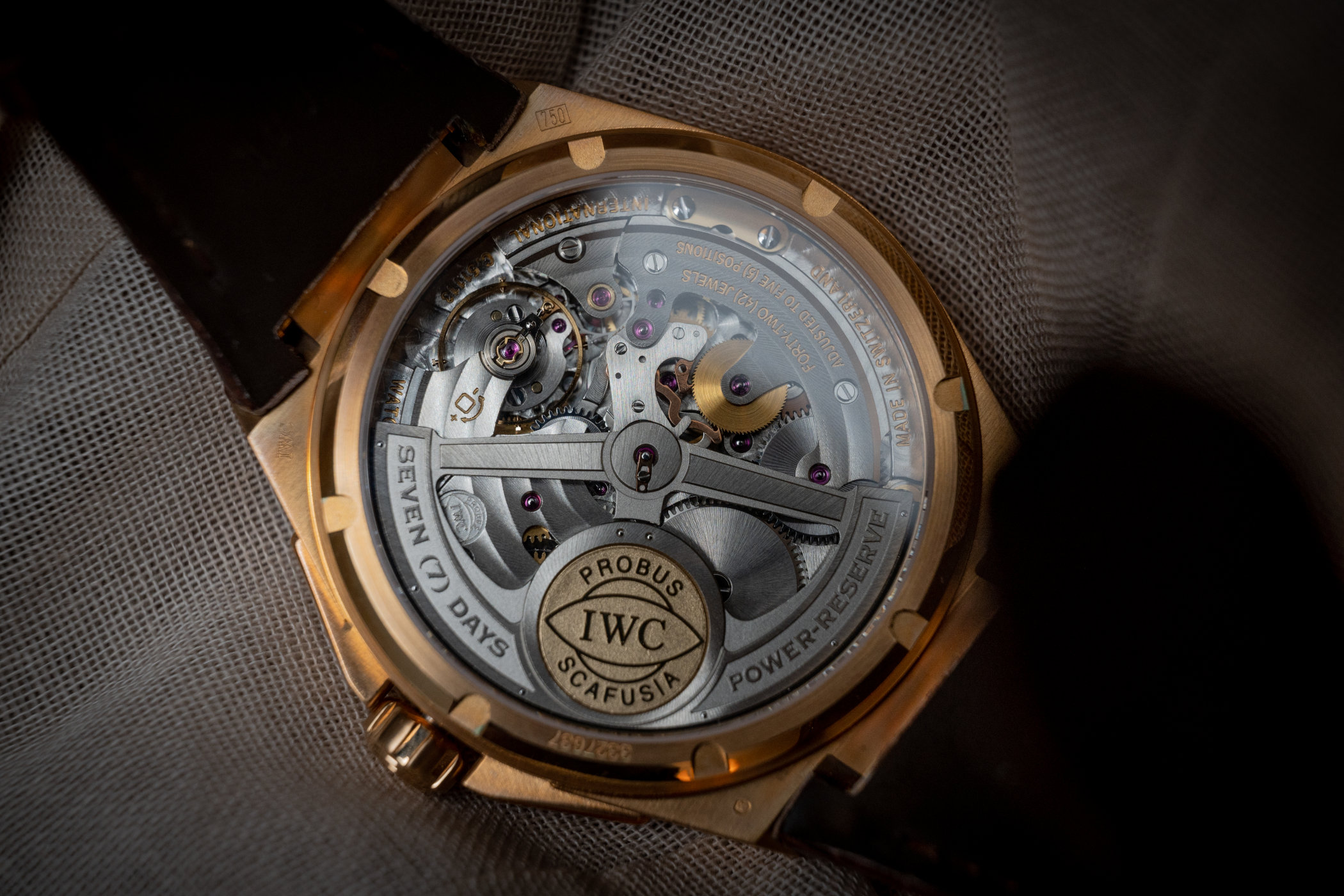
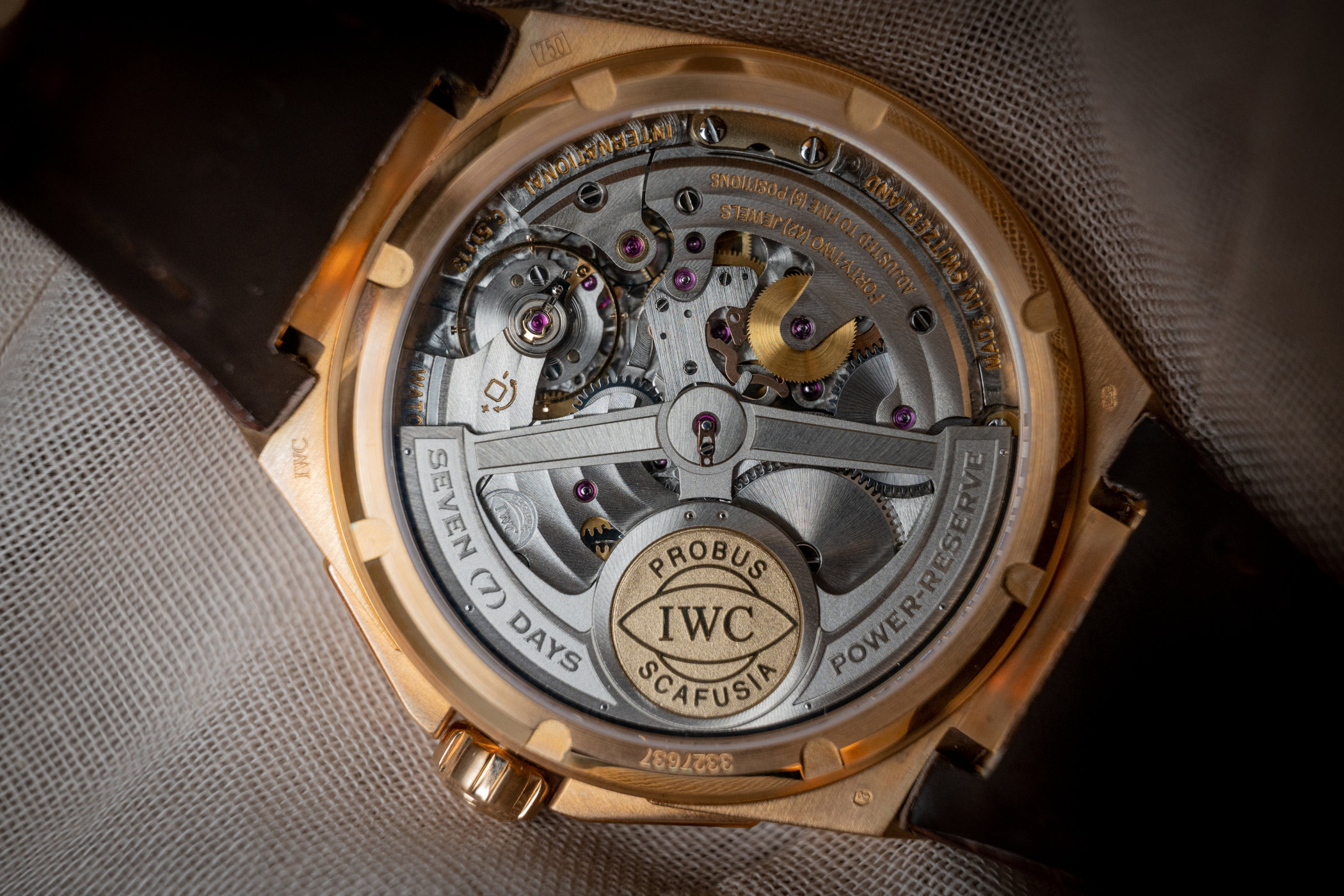
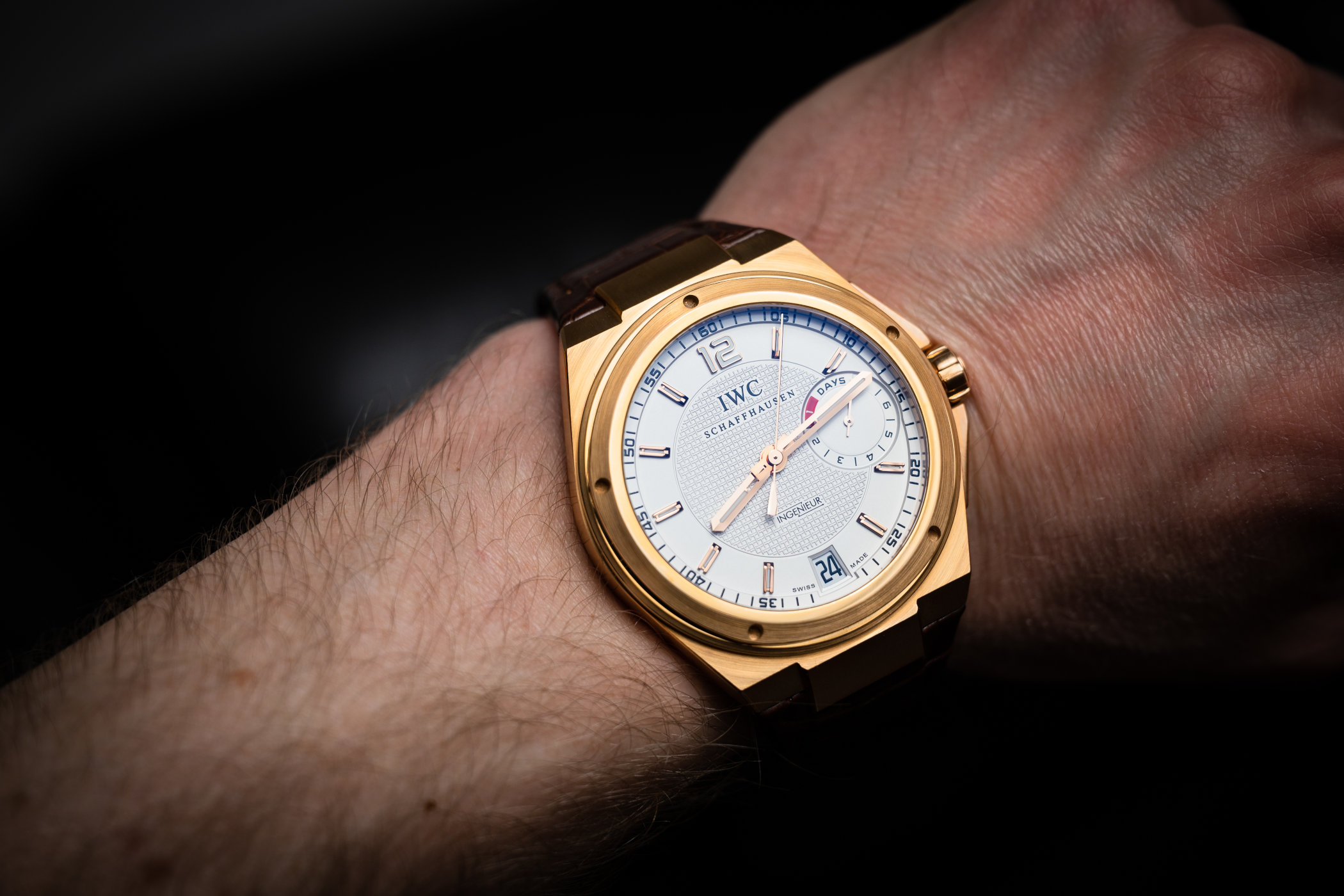
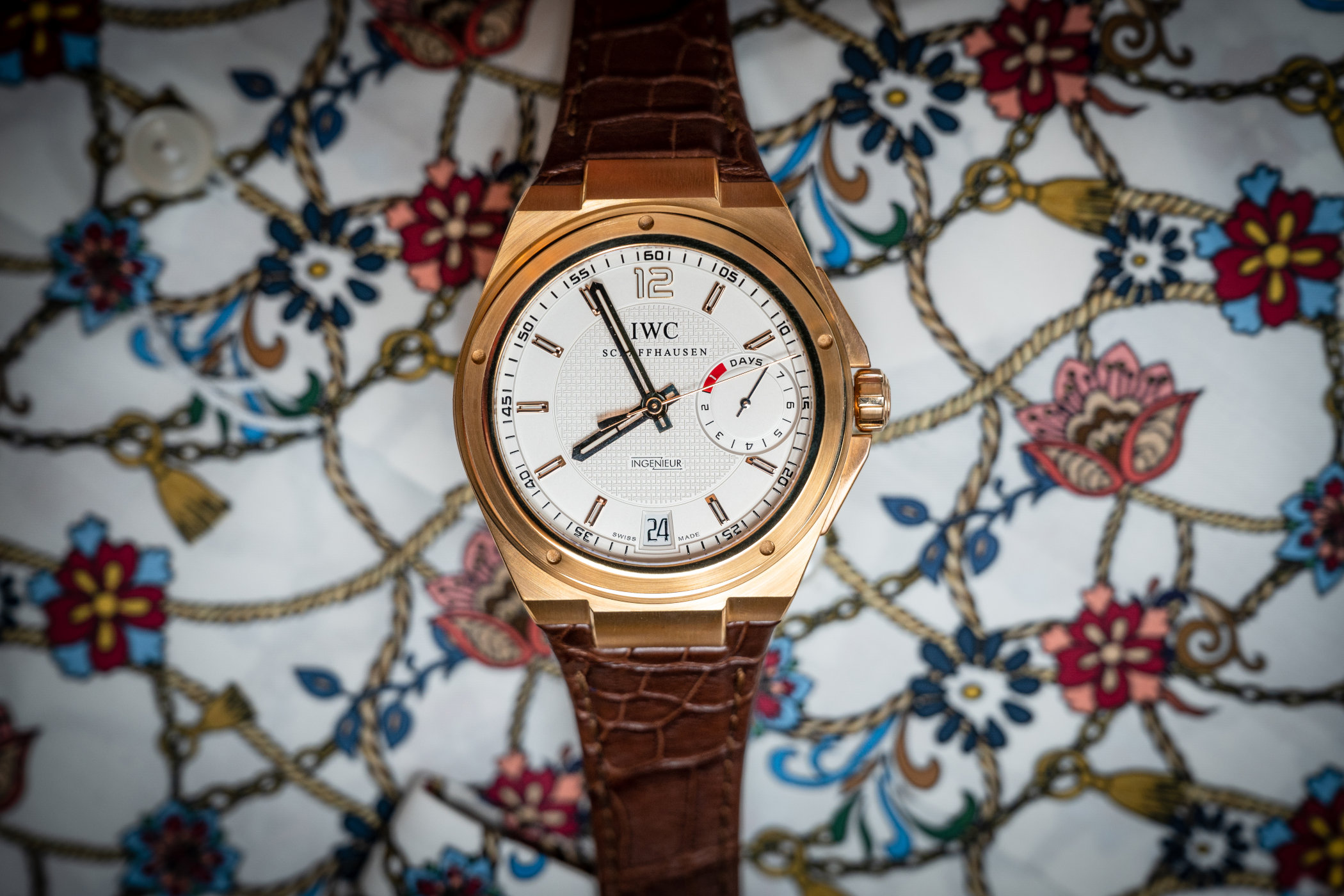
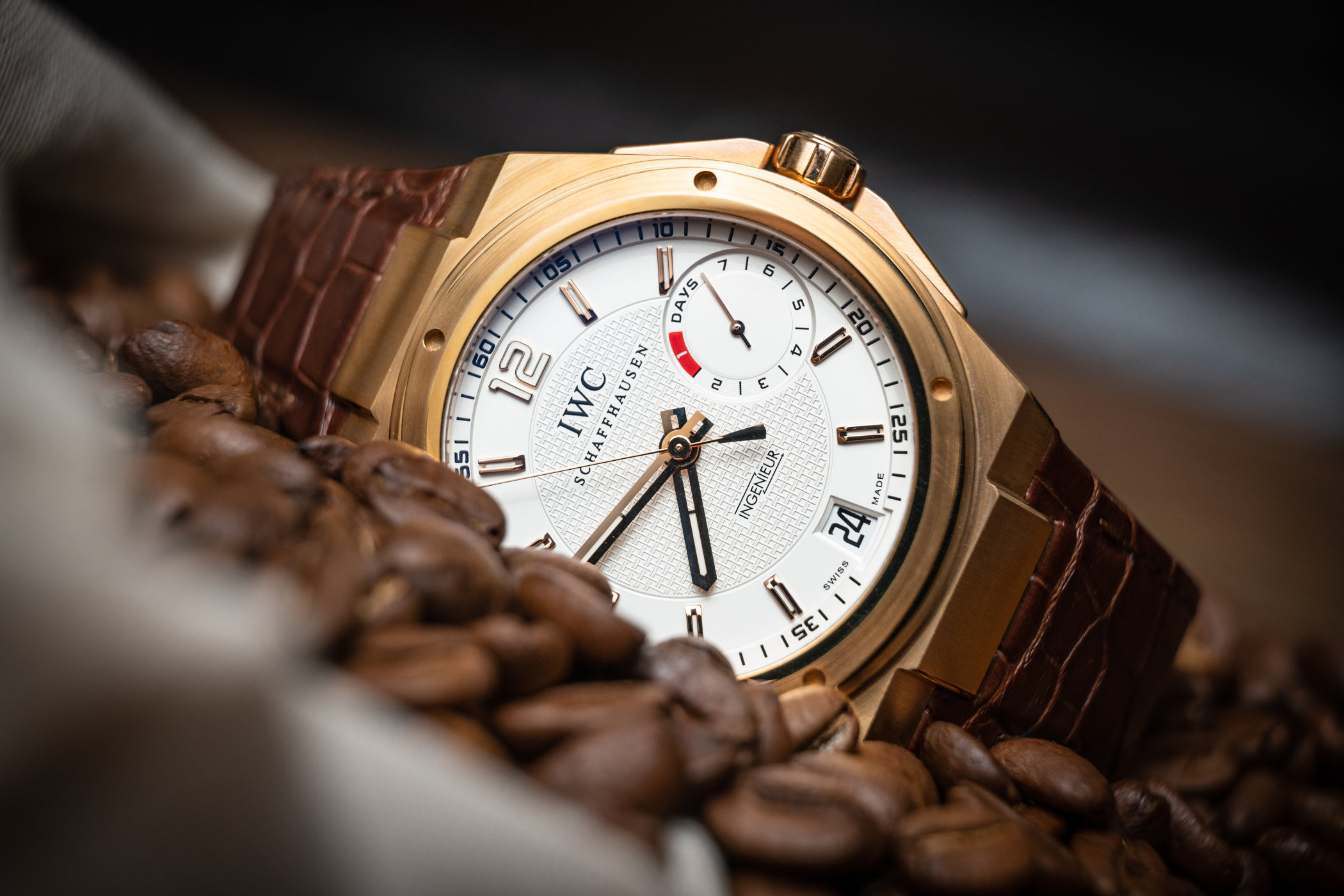
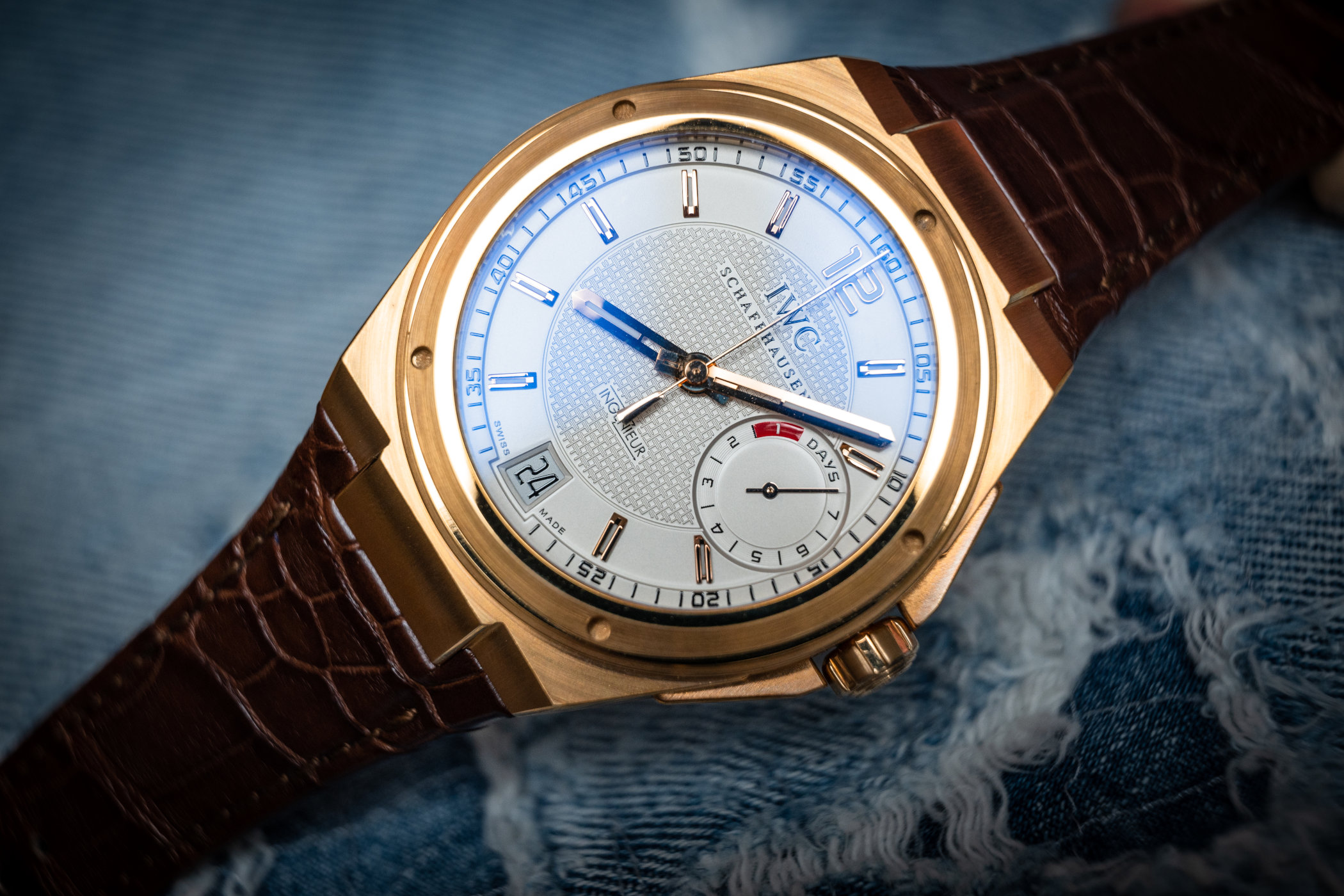
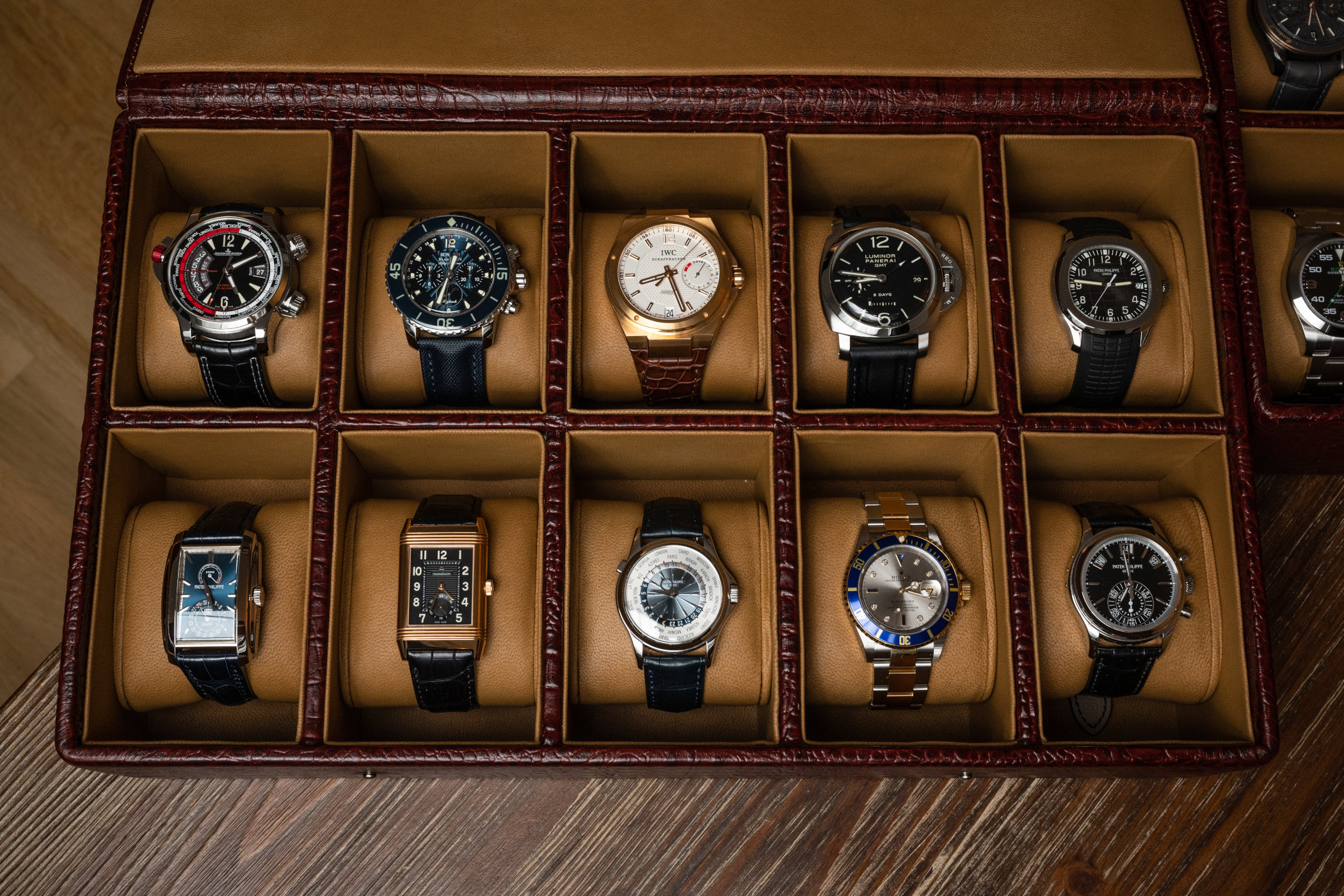
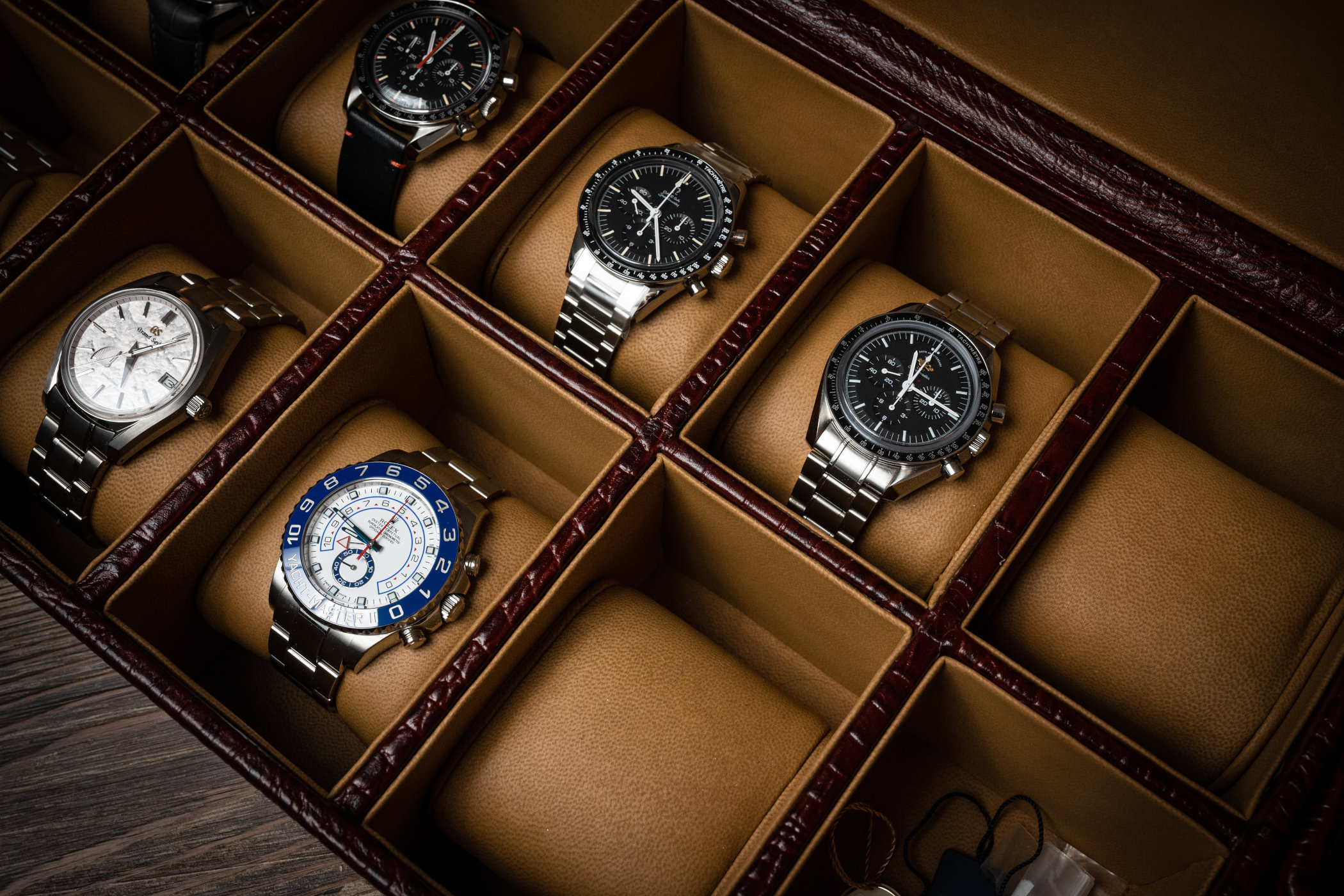
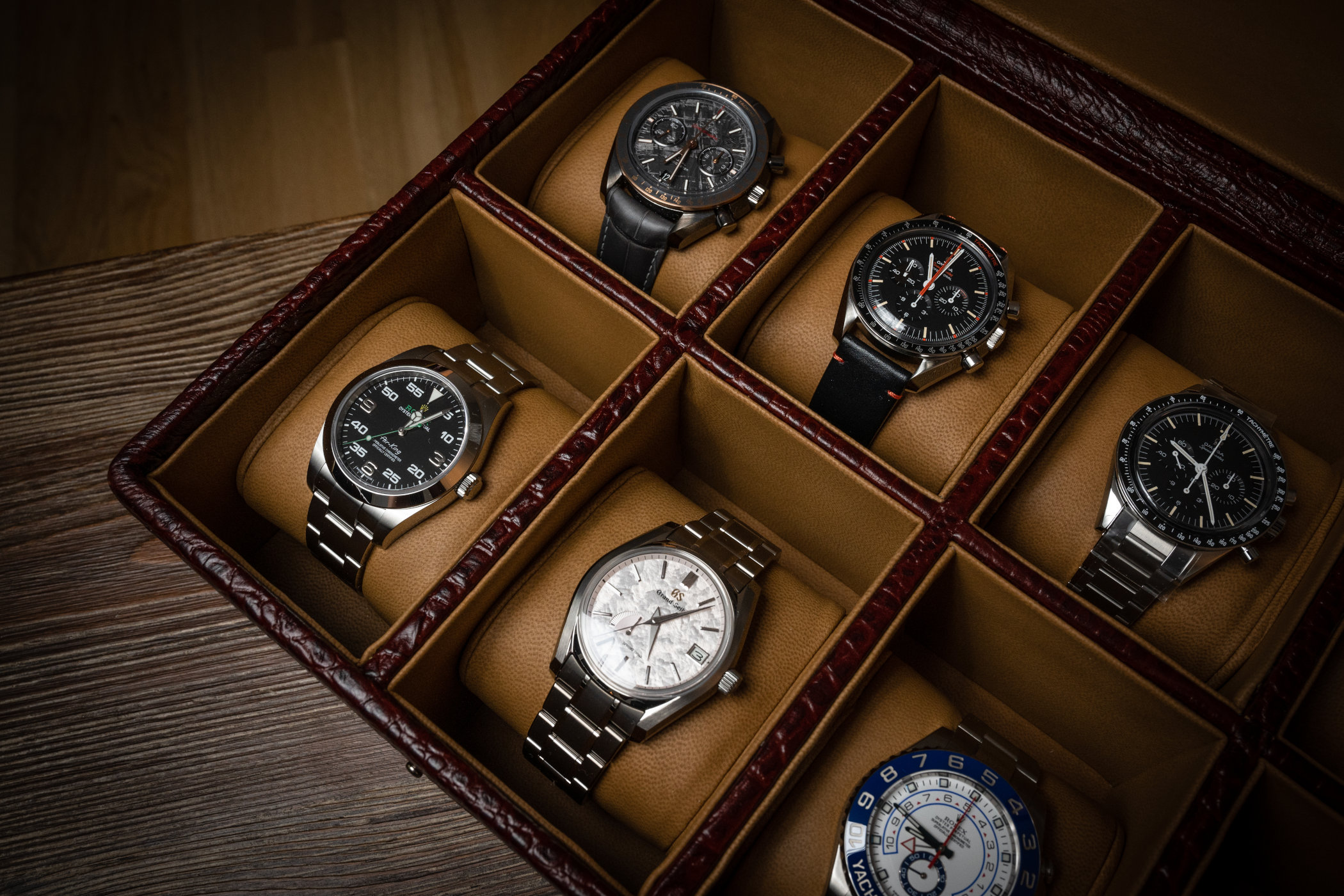
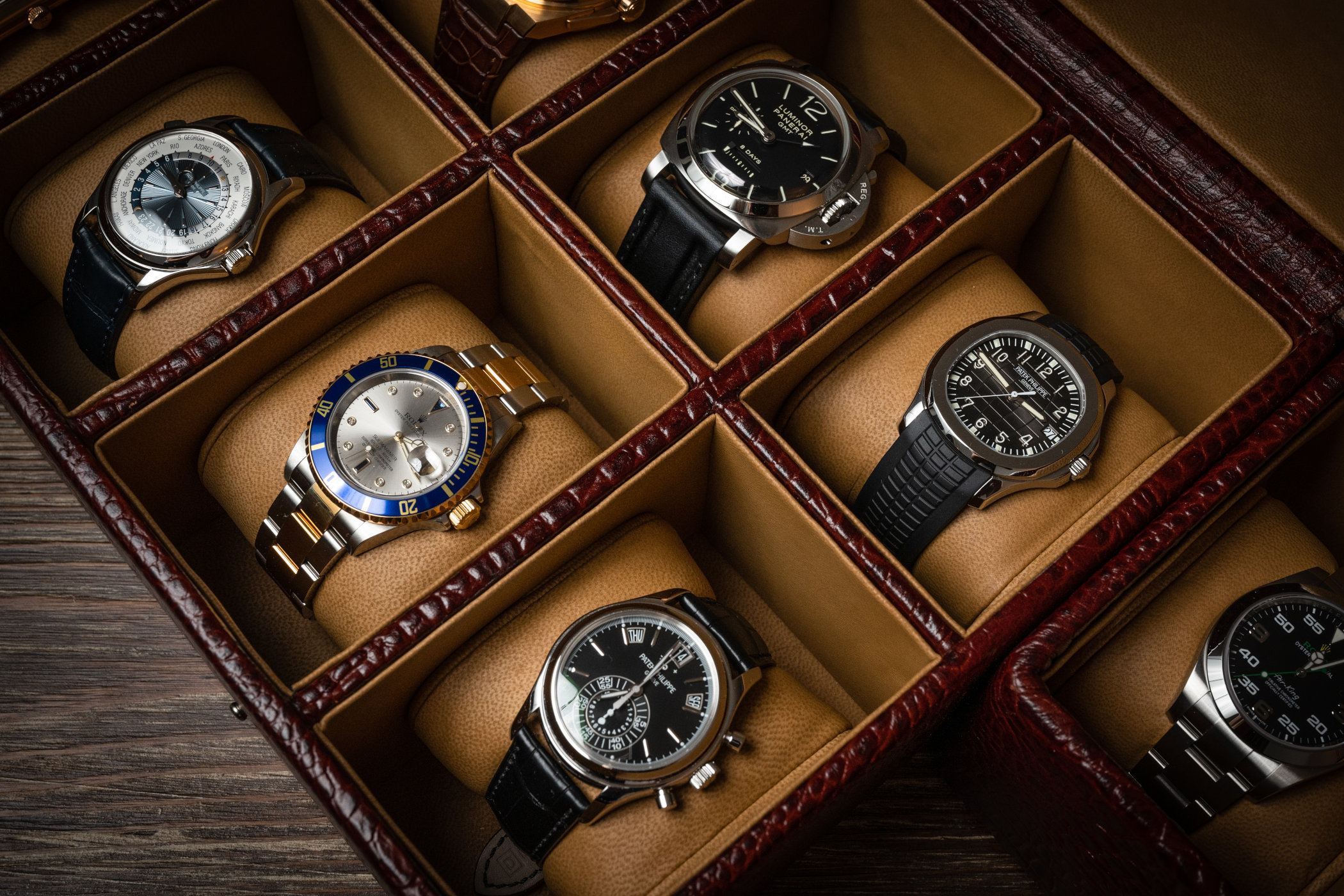
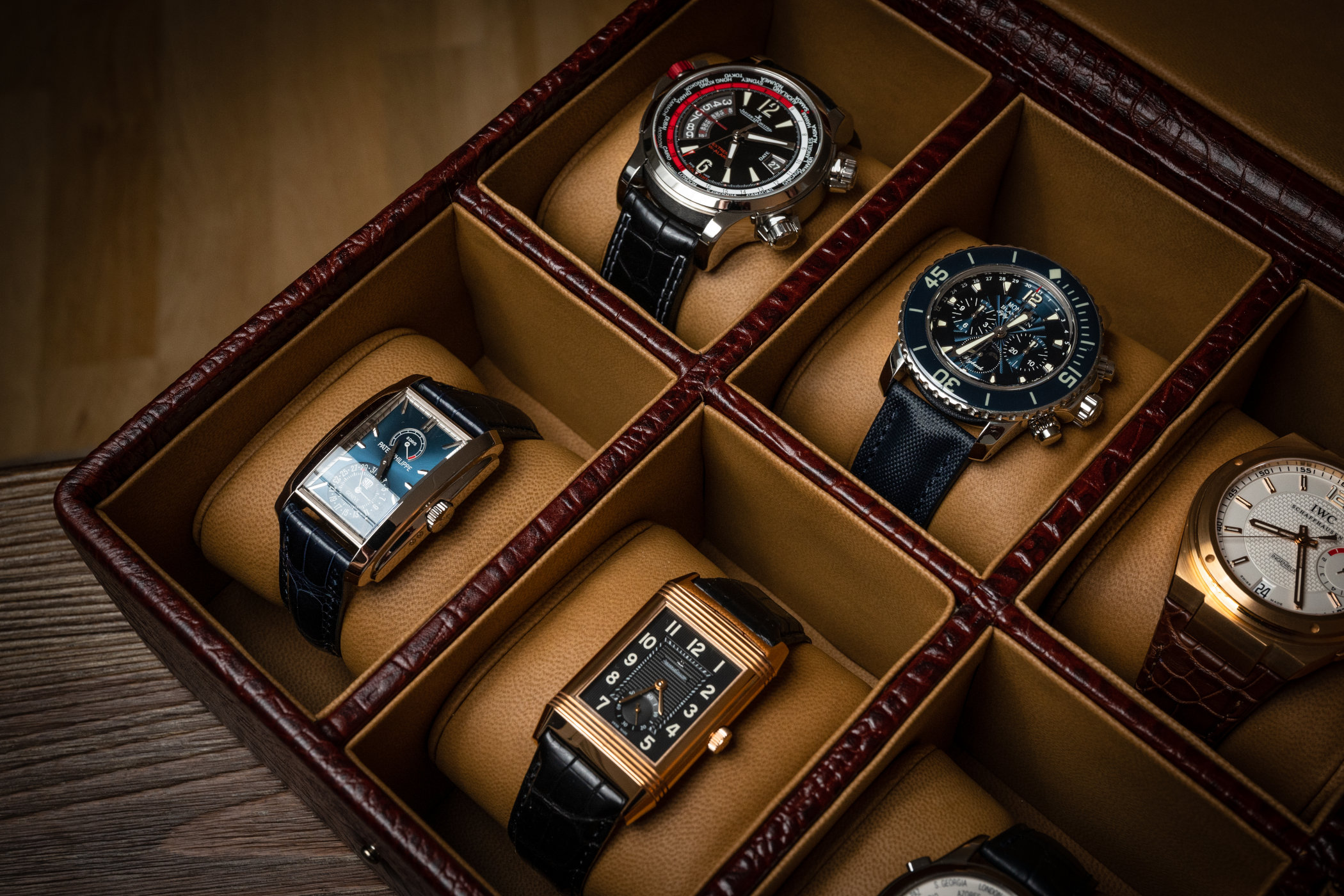
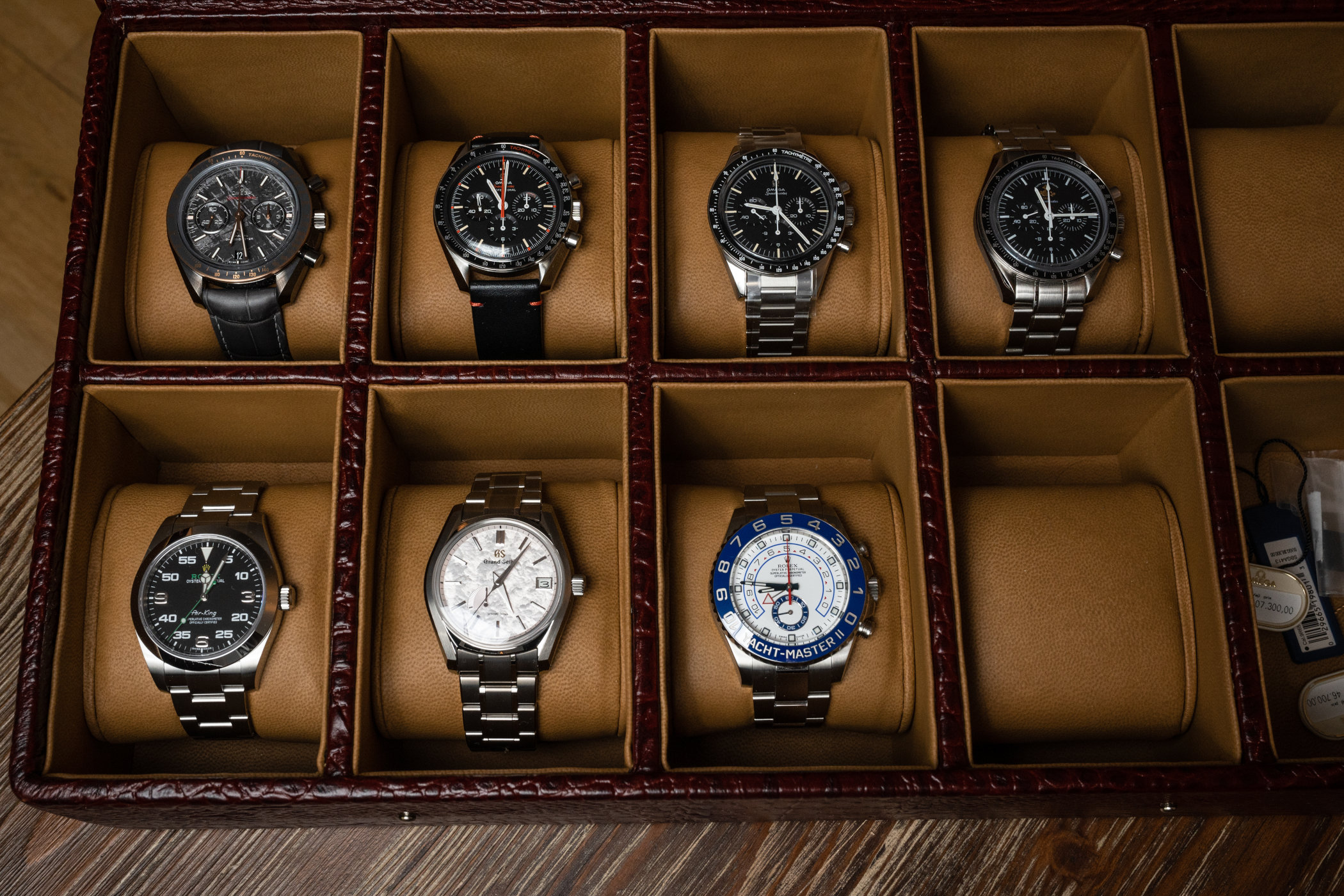
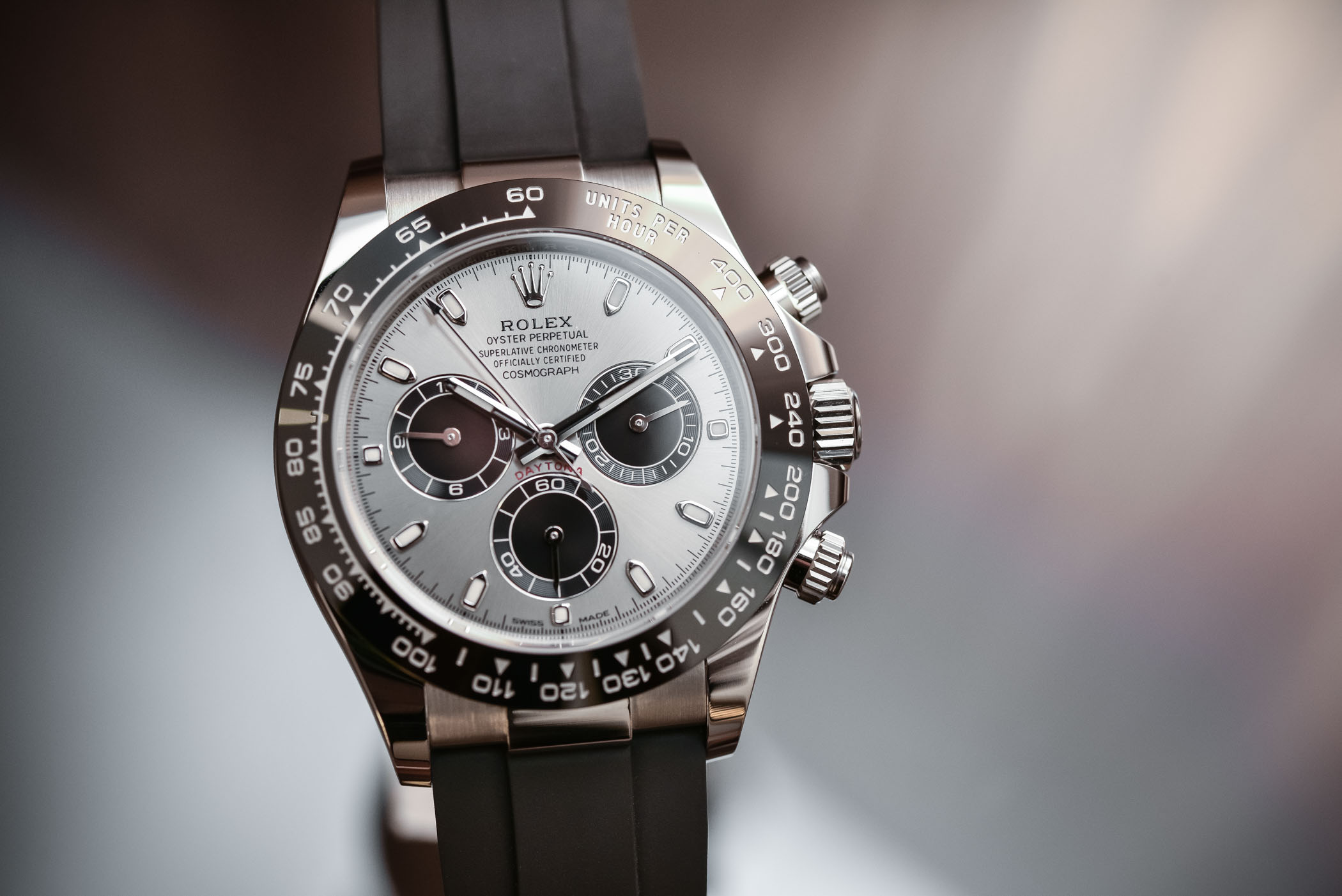

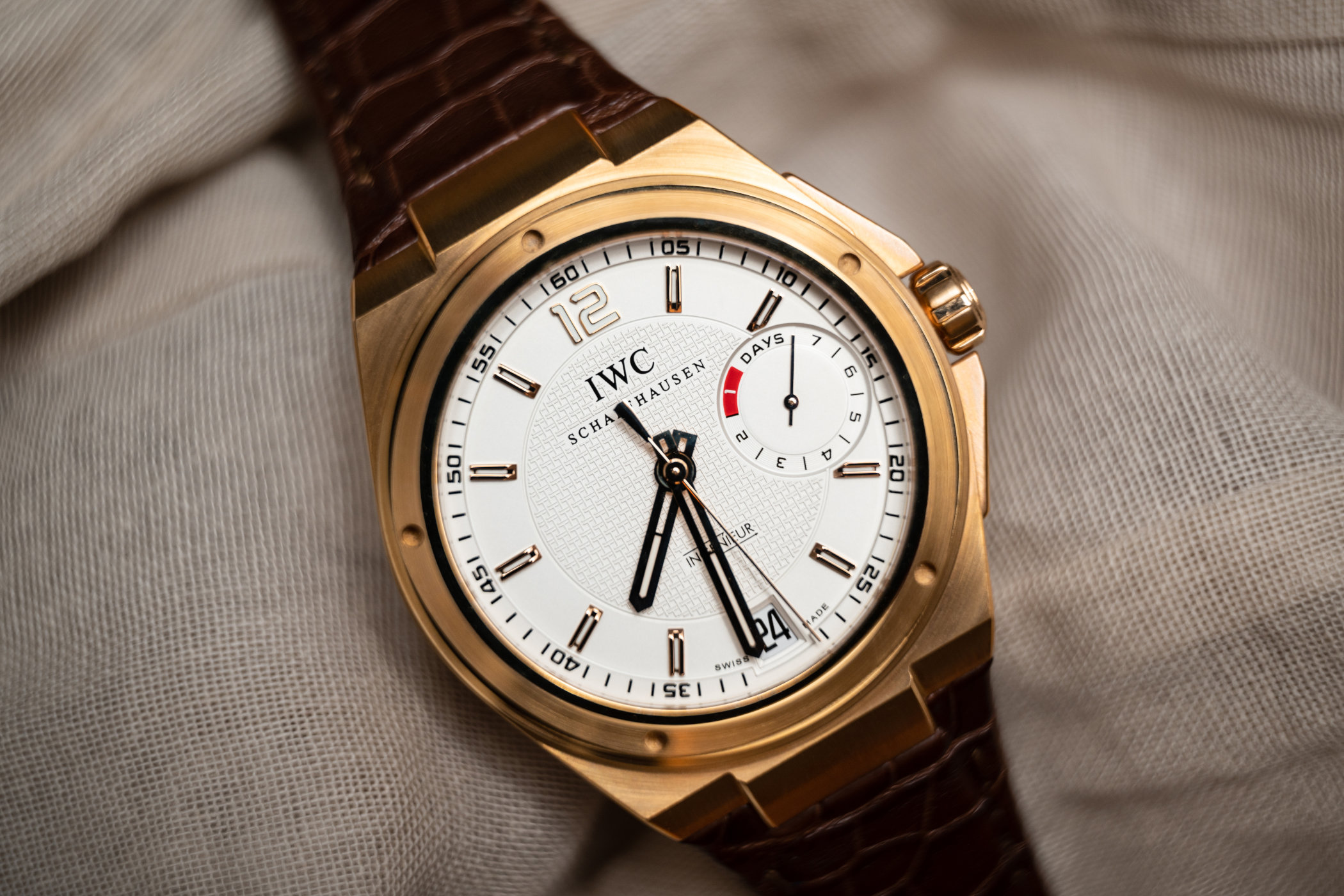
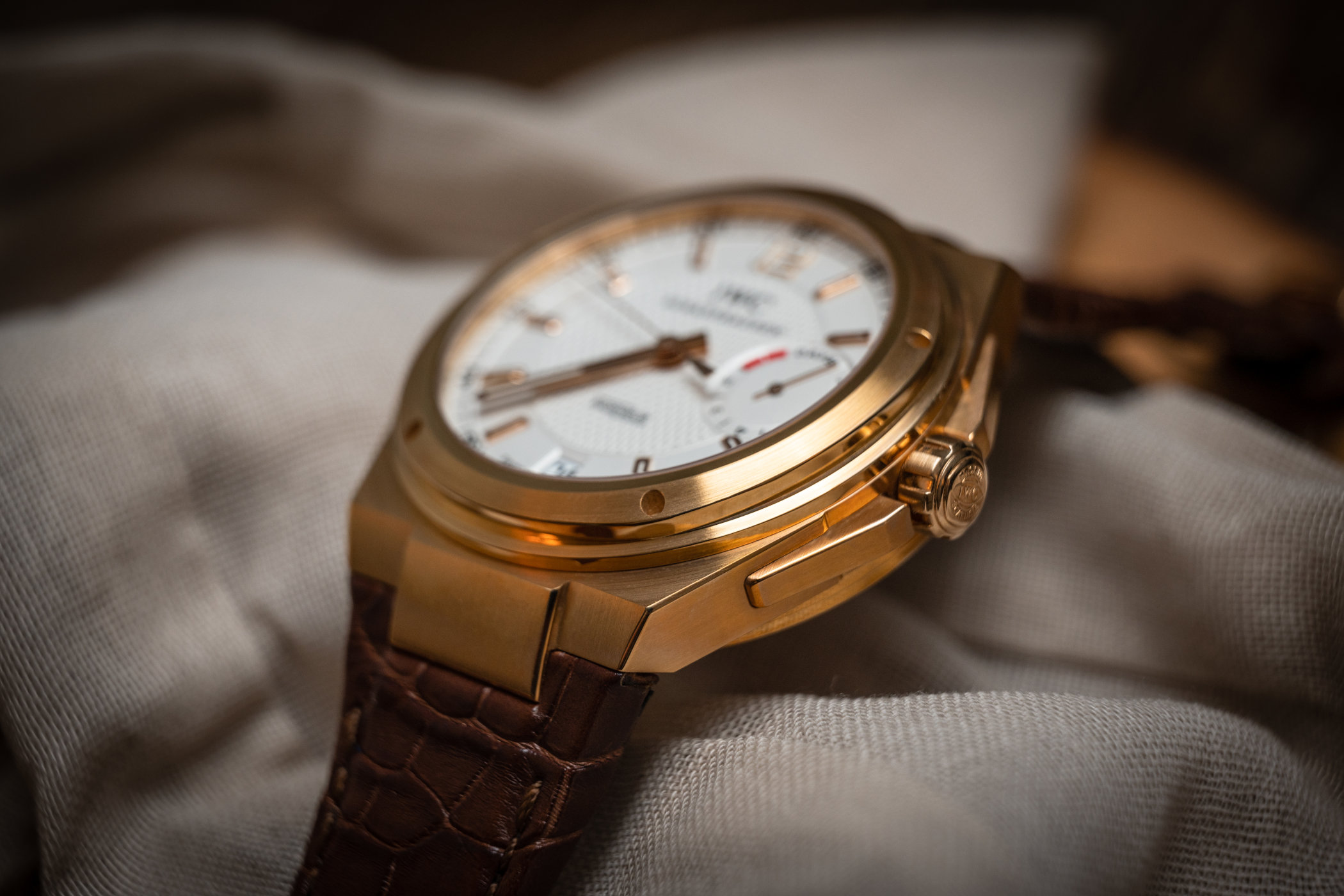



4 responses
It is like you want A Bentley and you come home with a Toyota
Excellent interview. In an era where I hear thinner and smaller watches are better, it is refreshing to see a watch guy wearing a thicker and larger IWC. Everyone has different tastes and I’m glad to see Mark isn’t following the hype for “today’s” timepiece.
I`m not german speaking but the mocking finesse of ad saying- so tief konnen nur manner sinken, has escaped. Correct me but I get it as – so low can only man can sink…….. down to 2000 meters under sea. Ladies would smile knowingly at the first part of ad.
Sorry, one can too much.